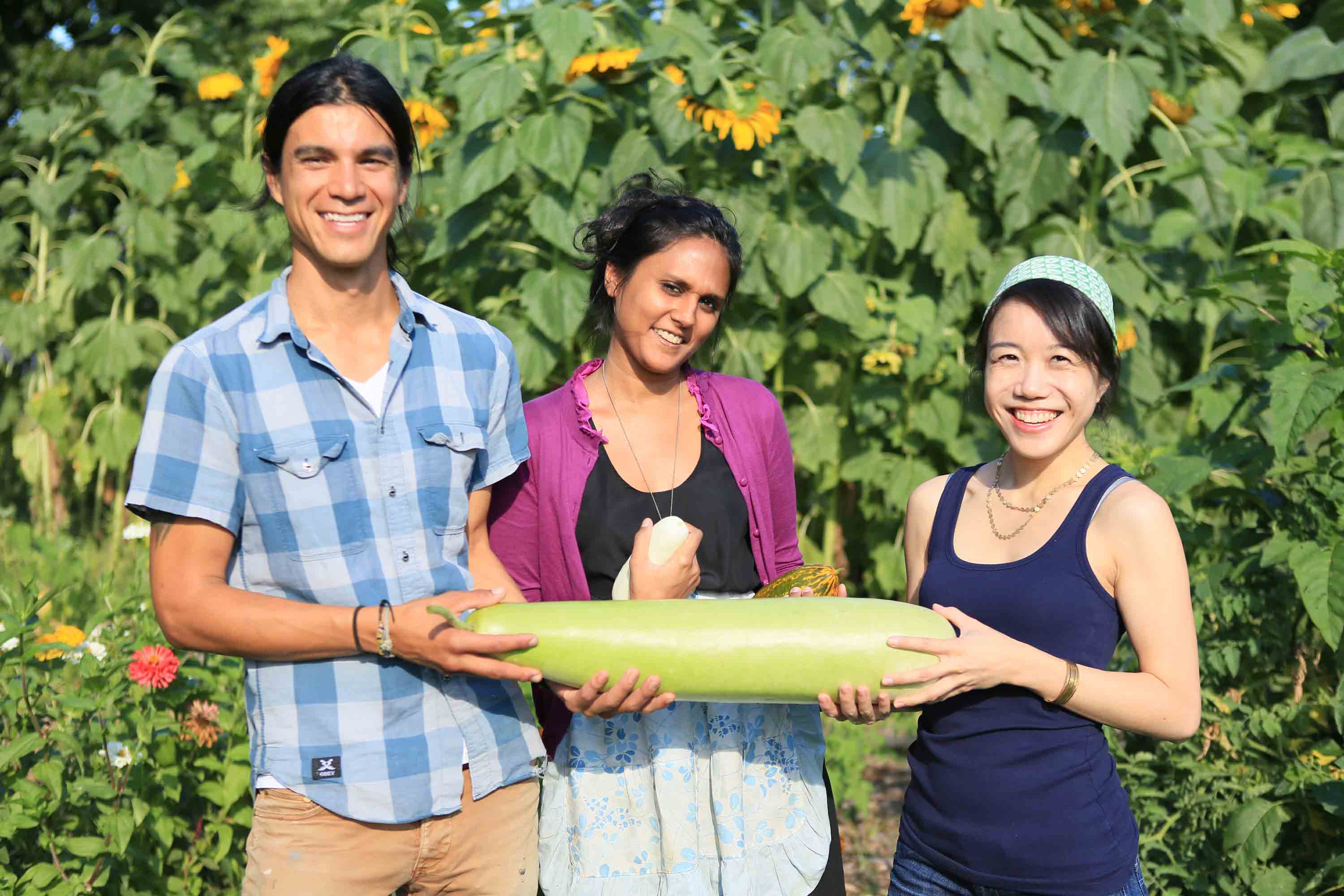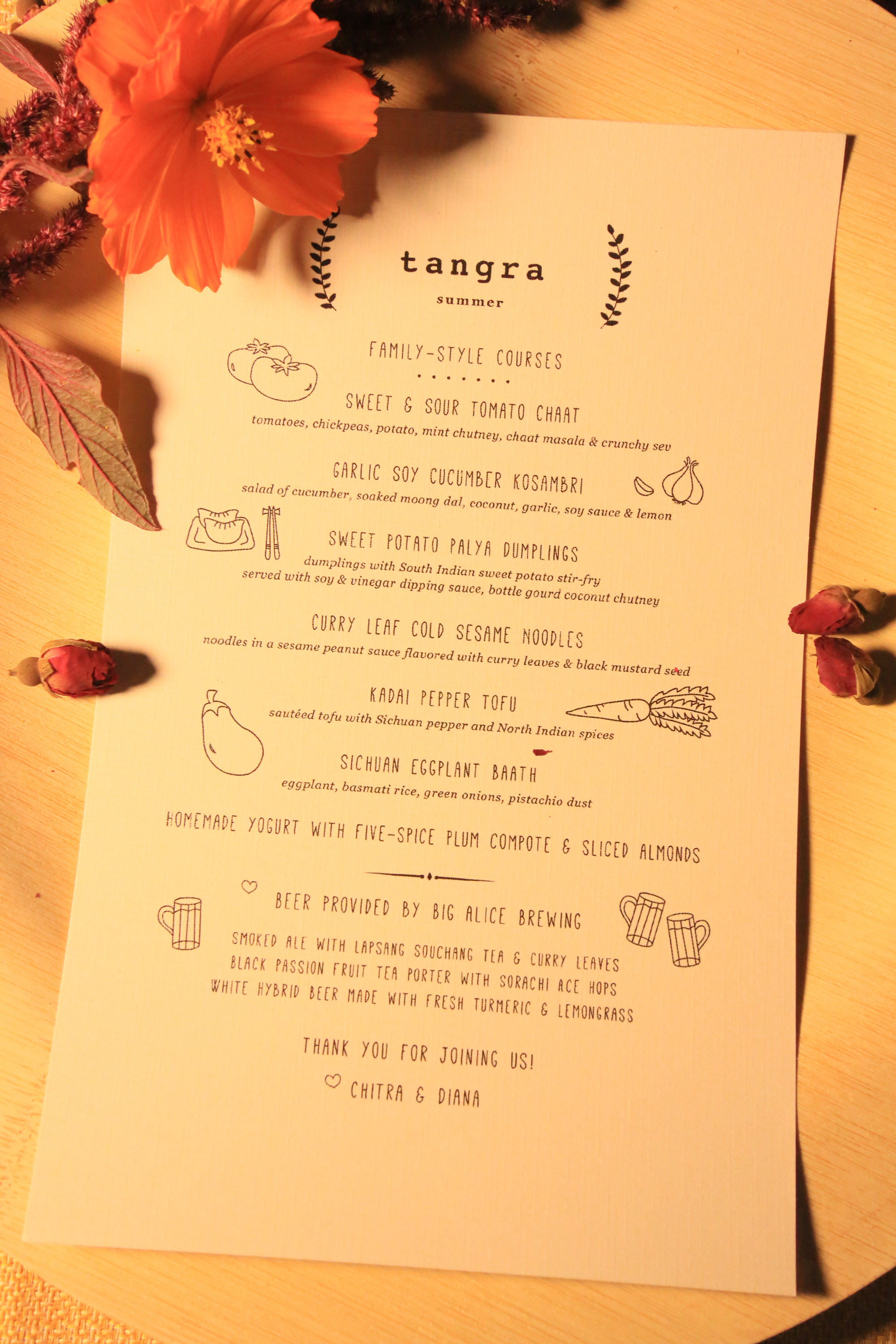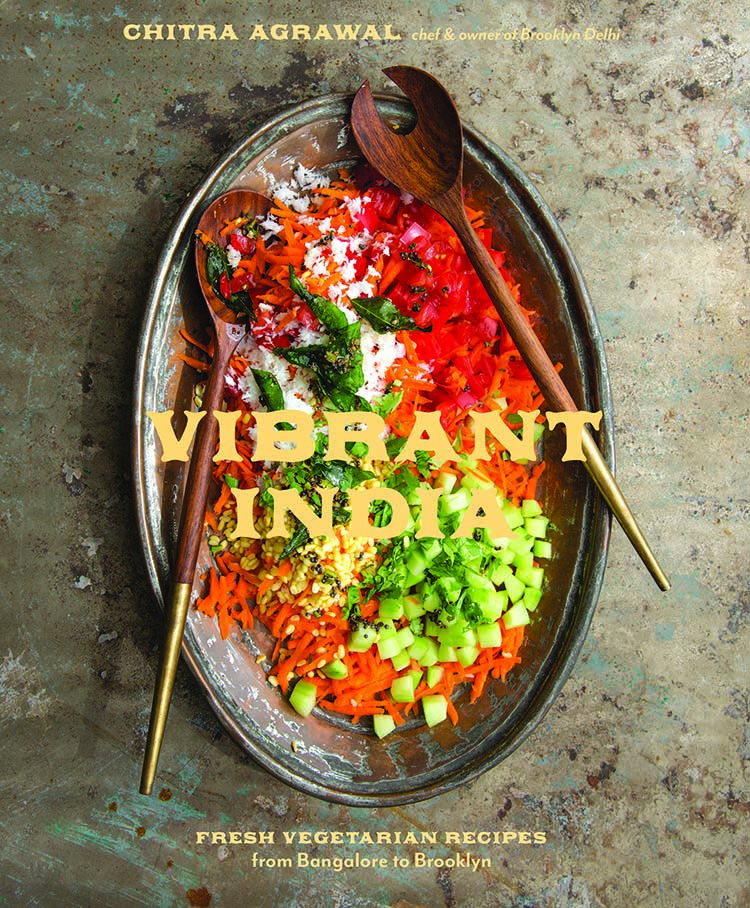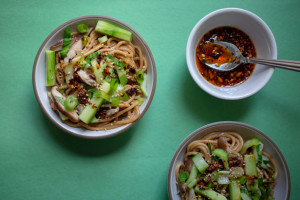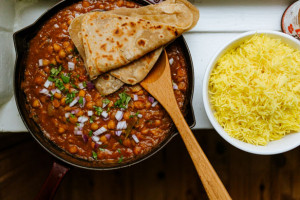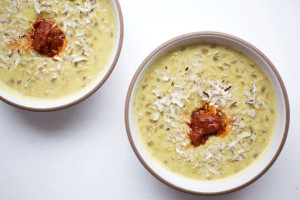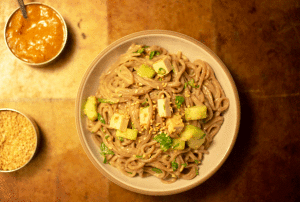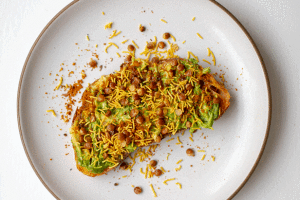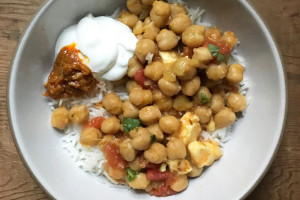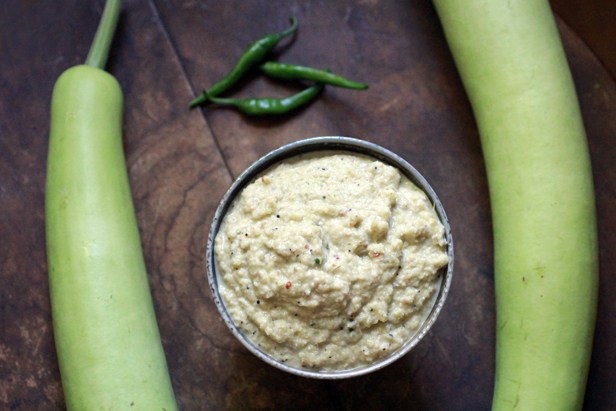
Bottle gourd coconut chutney is kind of like a South Indian equivalent of hummus. It has a looser consistency, but you can really just spread it on most everything. The flavors of this chutney are sweet from the coconut and squash and balanced out by the fiery hotness of the green chillies (can use jalapeños) and sour from tamarind. You may have to play around with the flavors to reach the right balance because of the variance of spiciness in chillies and the consistency of your tamarind (pulp vs. concentrate), but it’s worth it!
This recipe is inspired by my mother’s ridge gourd (herekai) chutney which she makes very well. I hope I am doing it justice because it’s actually one of her specialties. She also includes cilantro in her recipe (I didn’t have any unfortunately) which adds a nice flavor and also color to the chutney. In the recipe below, I have put the measurements for cilantro in case you have. I had made this chutney using the bottle gourds that Jason had grown for Diana and my first Tangra event. He had a lot of success as you can see from how large he was able to grow them:
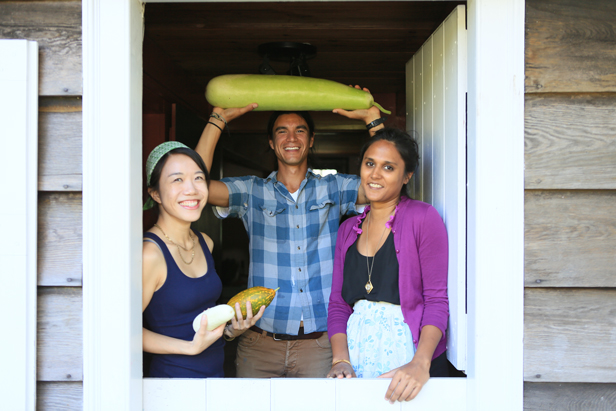
photo by Ethan Finkelstein
Bottle gourds have several different names in India. For instance, in the South where my mom is from they’re called sorakai, in the North where my father is from they’re called lakhi and in Gujarat in West India they are called dudhi. They are used differently in each place – added to stews, stir-fries or like I’m going to show you made into a chutney! In India there are also chutneys made just from the skins of the squash. For my version of the chutney, I peeled the skins, but I’m sure you could also make it with them for another flavor and texture.

This squash has a nice wateriness to it when cooked that I love, which makes grinding it into chutney that much easier. You can find this squash in Indian or Asian markets. If you can’t find it though, you could experiment with a zucchini I’m sure and come out to a similar type of chutney.
We served this chutney with sweet potato dumplings, which took them over the edge. This chutney is traditionally served with idli, steamed rice cakes or dosa, savory crepe, but it’s great mixed into rice or as a sandwich spread.
Bottle Gourd Coconut Chutney
Ingredients
1 bottle gourd, peeled, cut into cubes (2 cups)
1 tablespoon + 1 teaspoon oil
2 pinches of hing or asafetida
1 teaspoon + 1 teaspoon black mustard seeds
1 tablespoon + 1/2 teaspoon urad dal (white without black skin)
1/2 teaspoon fenugreek seeds
5 small green chillies or 1 jalapeño, stems removed (or to taste as chillies can vary in heat)
2 strands of curry leaves + 3 curry leaves
2 tablespoons roasted chana dal
half bunch of cilantro with some stalk
1/2 cup of frozen grated fresh coconut
1 teaspoon tamarind concentrate (depending on concentration) or 2 tablespoons tamarind pulp with no seeds or stems
salt to taste
water for blending
Method
Heat 1 tablespoon of oil under medium heat with 1 pinch of hing or asafetida, 1 teaspoon of black mustard seeds and 1 tablespoon of urad dal. When the black mustard seeds start to pop and the urad dal starts to brown. Turn the heat to medium low and add in the fenugreek seeds. When they start to turn golden brown (few seconds), add in the green chillies and the 2 strands of curry leaves. Let them sputter for a seconds and get coated in oil. Add in the chopped bottle gourd and mix well. Cook the squash and salt to taste under a low flame with the lid on for 30 minutes or until soft. Cool the bottle gourd.
In a blender, first put in 2 tablespoons of roasted chana dal and blend to a powder. Add to the blender the cilantro, coconut, tamarind, and cooked bottle gourd for blending. You may need to add a little water or stuff the contents of the blender down with a spoon periodically to get it blending. You want to have a consistency of a loose hummus and the flavor to have some heat from the chillies, sour for tamarind and sweet from the coconut and bottle gourd.
Transfer the chutney to a bowl.
In a small frying pan under medium heat, add 1 teaspoon of oil, pinch of hing, 1 teaspoon of mustards seeds, 1/2 teaspoon of urad dal. When the mustard seeds start to pop and the urad dal starts to brown, add in 3 curry leaves. Coat the leaves with oil and immediately pour over the chutney in the bowl. Add salt to taste.
NOTES
If you want the chutney to have less heat, cook the green chillies for longer and add them earlier in the frying.
You can also mix in some Greek yogurt to make a more smooth consistency.
Add some lemon or fresh grated ginger for some brightness.
If you want more heat, you can also fry dried red chillies in the final oil mixture to pour over the chutney.



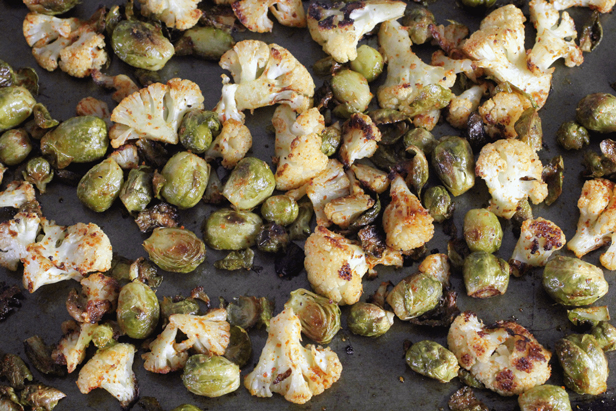
 Follow
Follow
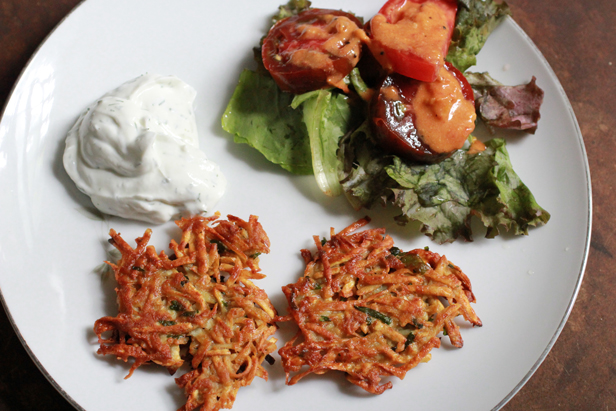



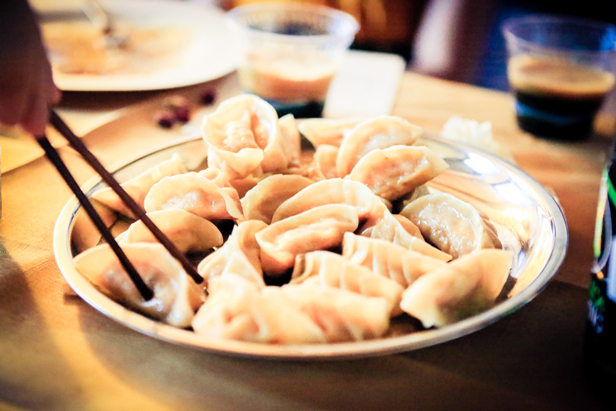
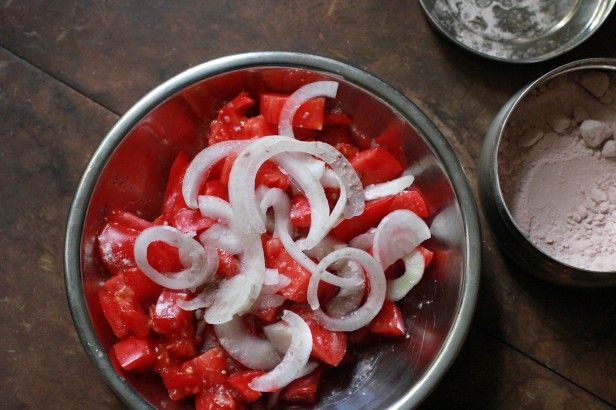 I have to admit I do like mixing up a salad dressing from scratch with random ingredients in my fridge, but the salad I grew up eating was just as delicious but way more basic than that. I think the taste had much to do with the quality of the produce because my mother would sometimes just put a pinch of salt on a cut cucumber with a squeeze of lemon and I was always fascinated with how such a simple preparation carried so much flavor.
I have to admit I do like mixing up a salad dressing from scratch with random ingredients in my fridge, but the salad I grew up eating was just as delicious but way more basic than that. I think the taste had much to do with the quality of the produce because my mother would sometimes just put a pinch of salt on a cut cucumber with a squeeze of lemon and I was always fascinated with how such a simple preparation carried so much flavor.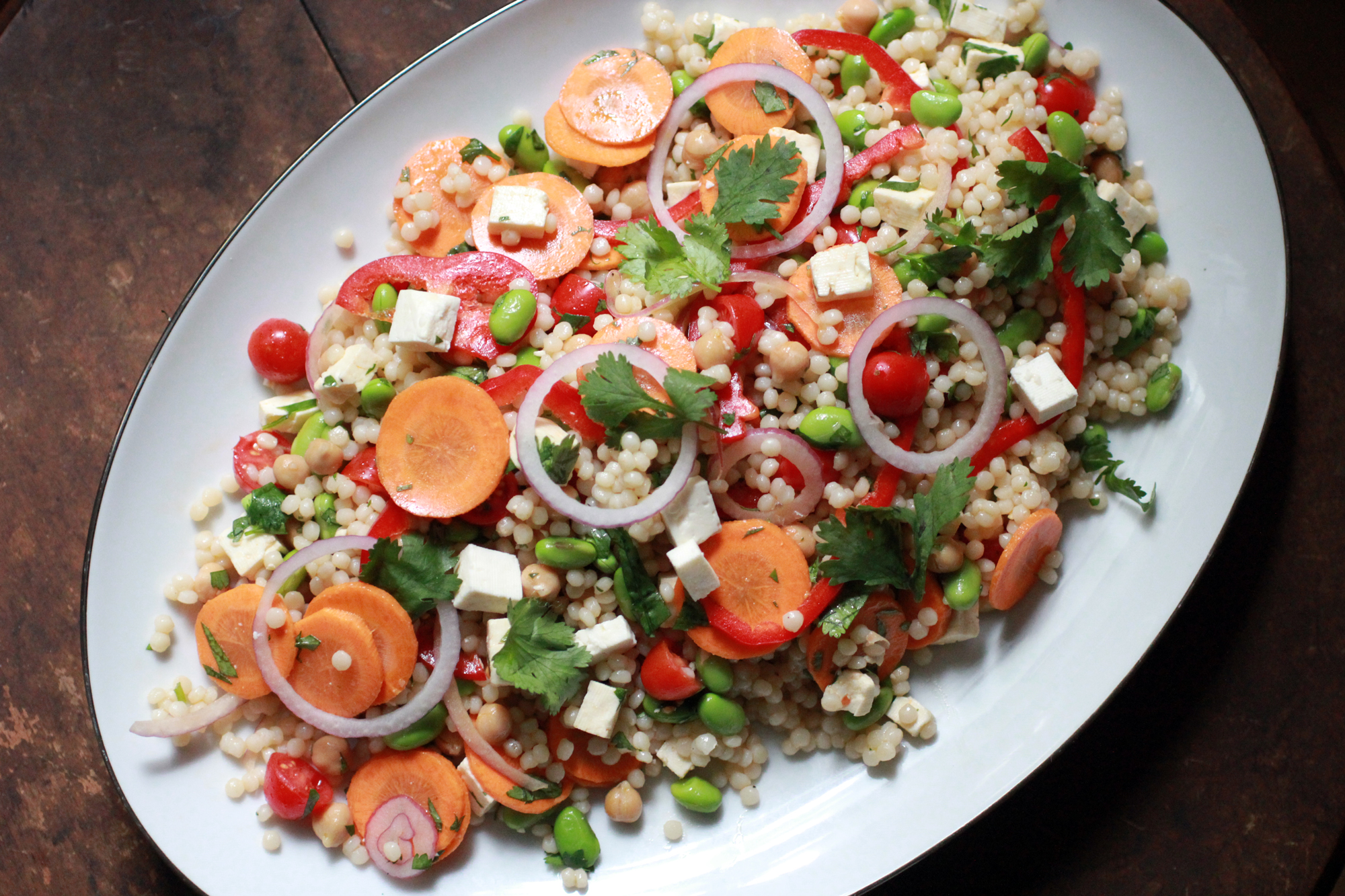 I was first introduced to Israeli couscous by my friend
I was first introduced to Israeli couscous by my friend 